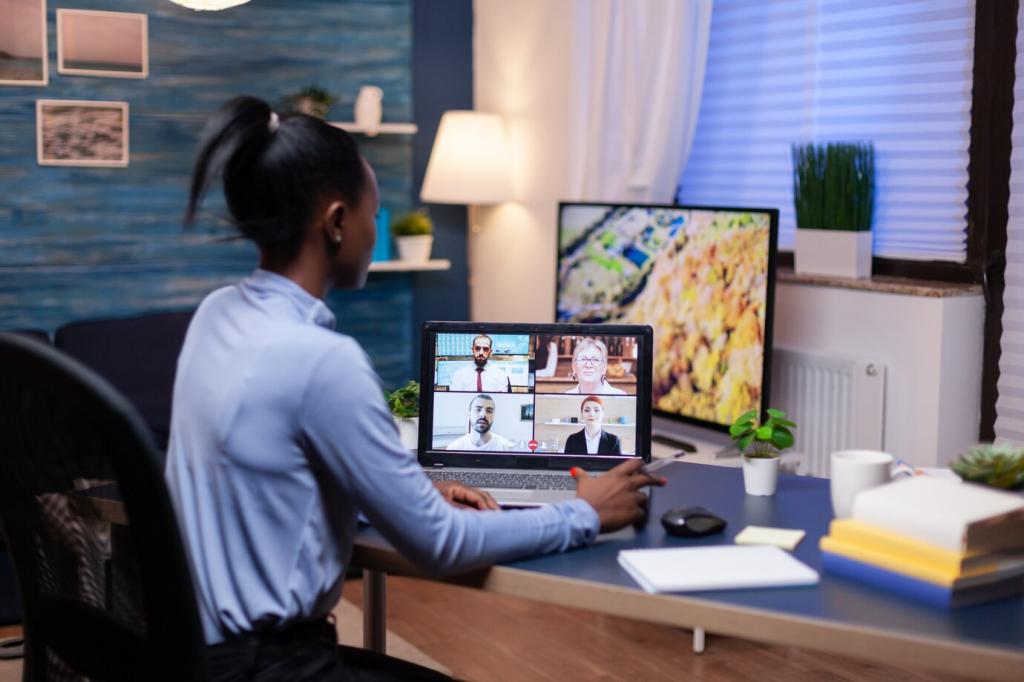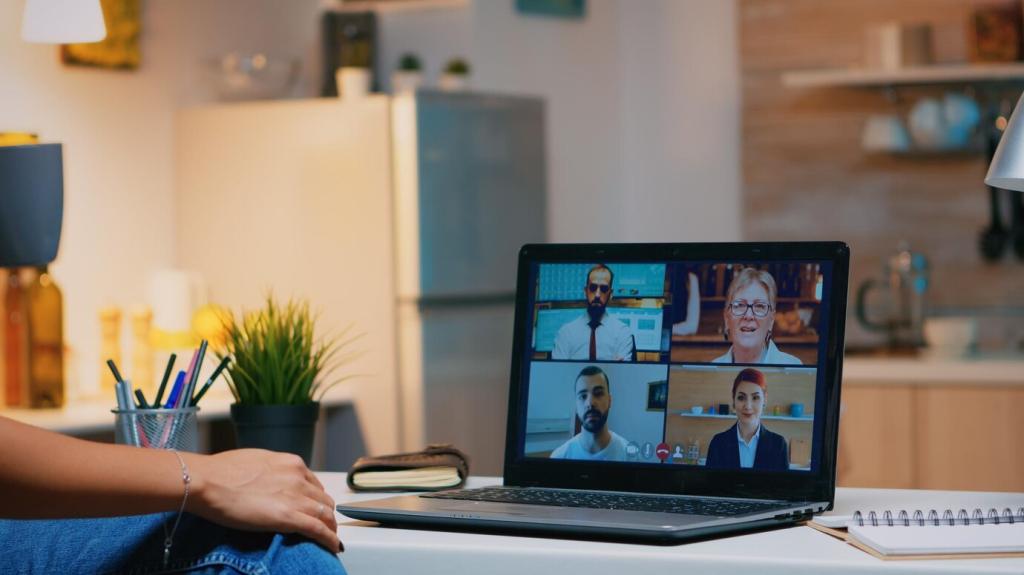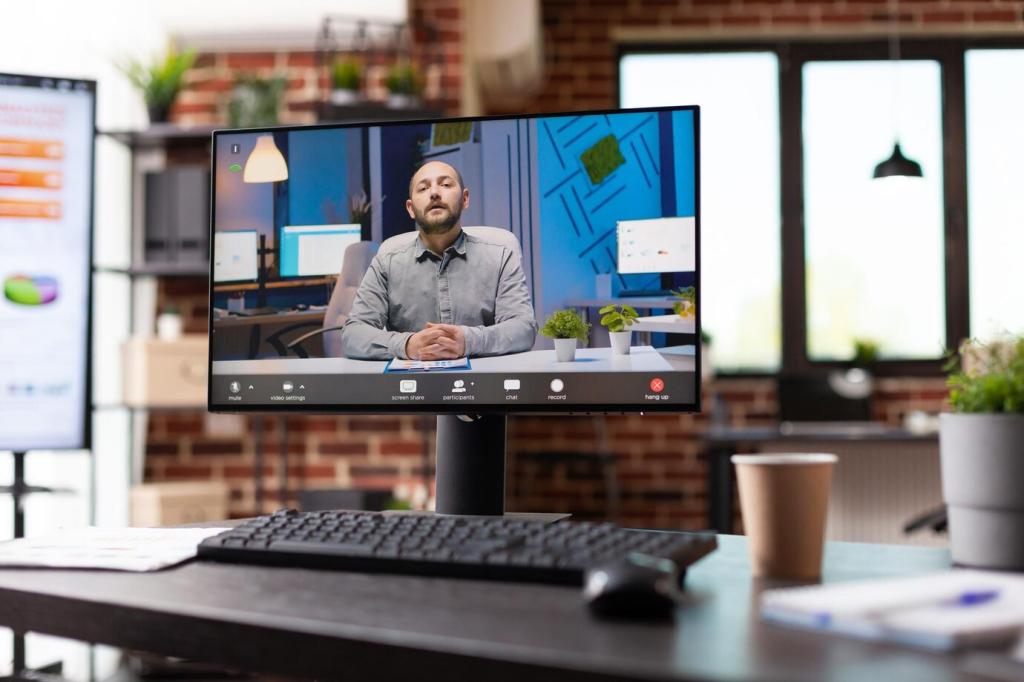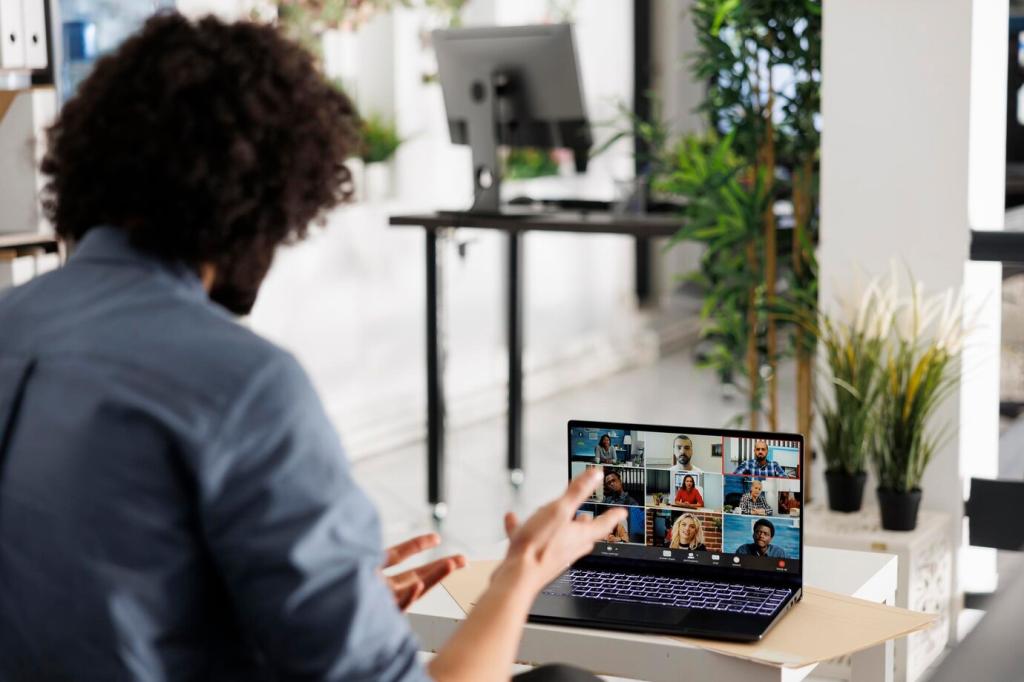
Leveraging Technology for Remote Learning: A Practical, Human-Centered Guide
Chosen theme: Leveraging Technology for Remote Learning. Welcome to a space where digital tools meet thoughtful pedagogy, real stories, and supportive community. Subscribe, comment, and help us shape smarter, kinder remote classrooms together.
Designing a Digital-First Classroom
Use a weekly module template with a consistent order: goals, mini-lecture, activity, discussion, assessment, reflection. Learners in remote environments thrive when navigation is predictable and cognitive load stays focused on understanding.
Designing a Digital-First Classroom
Blend live sessions for connection with asynchronous activities for flexibility. Record short videos, offer transcripts, and use discussion prompts that extend learning beyond the call. Invite students to continue dialogue thoughtfully.


Engagement and Community Online
Warm Openings and Rituals
Begin live sessions with a quick win: a poll, a two-sentence story, or a visual prompt. Small rituals create belonging. One teacher’s weekly “Show a workspace object” sparked unexpected, delightful connections.
Gamified Progress and Micro-Challenges
Offer badges for timely reflections, peer support, or resource curation. Micro-challenges keep momentum between sessions. If you have a playful challenge idea, share it below so others can remix it creatively.
Breakout Rooms with Purpose
Give each breakout a clear task, time limit, and deliverable. Provide a checklist and a shared doc link before splitting. Invite one sentence per person, ensuring equitable voice in remote collaboration.

This is the heading
Lorem ipsum dolor sit amet, consectetur adipiscing elit. Ut elit tellus, luctus nec ullamcorper mattis, pulvinar dapibus leo.

This is the heading
Lorem ipsum dolor sit amet, consectetur adipiscing elit. Ut elit tellus, luctus nec ullamcorper mattis, pulvinar dapibus leo.
Assessment and Academic Integrity Online
01
Invite learners to create explainers, case responses, or prototypes using real data and audience needs. Remote technology supports portfolios and screen recordings that demonstrate process, not just final answers.
02
Short quizzes, reflection prompts, and draft submissions reduce pressure and surface misconceptions early. Automated feedback in your LMS saves time, while targeted comments keep students progressing with confidence.
03
Open-book, application-focused questions minimize cheating incentives. Ask for sources, reasoning, and iterations. Share your favorite integrity-friendly prompt below to help peers improve remote assessments without intrusive proctoring.
Learning Analytics and Feedback Loops
Track simple indicators: logins, completion, and discussion quality. When participation dips, send a warm check-in with specific next steps. Technology enables timely care in remote learning ecosystems.
Learning Analytics and Feedback Loops
Commit to quick, actionable feedback on small tasks. A short screencast or rubric snapshot often beats long comments. Students stay engaged when they see learning move forward rapidly.


Set Humane Rhythms
Adopt a predictable cadence: release modules on the same day, limit live sessions, and schedule breaks. Learners juggling work and caregiving rely on stable, technology-supported routines to succeed.
Ergonomics and Movement
Encourage camera-off stretch breaks, posture checks, and short walks between tasks. A healthy body hosts a better mind. Share your favorite micro-break playlist or timer technique with our community.
Offline Is Part of Learning
Assign readings, sketch notes, or interviews away from screens, then bring insights back digitally. Remote learning flourishes when technology frames, rather than replaces, reflective, low-tech moments of thinking.
